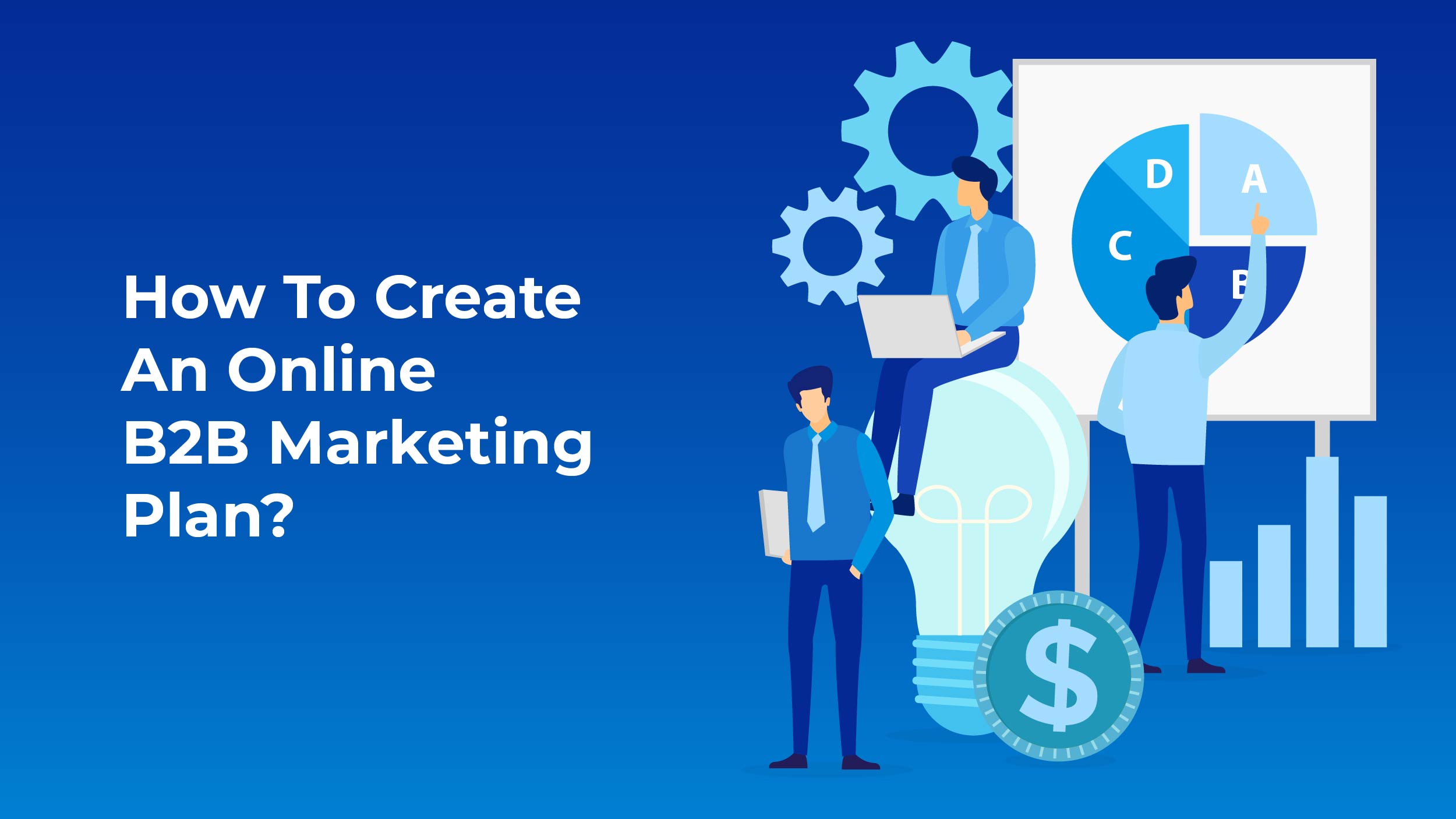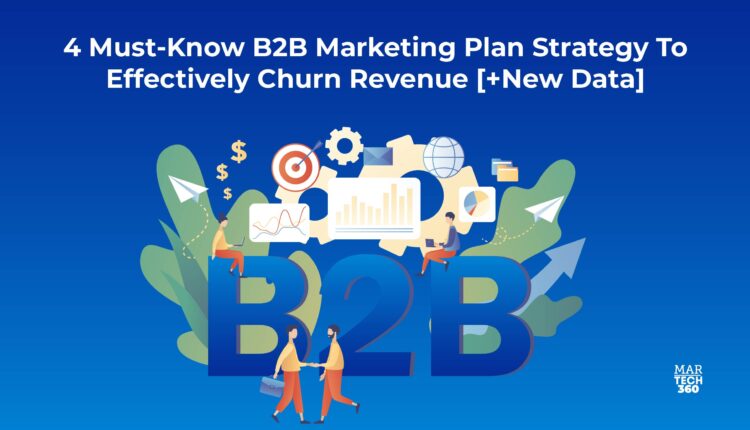Nailing B2B marketing is a tough gig. With creativity, budget constraints, and choosing the right channels, it’s a juggling act. But the real deal-breaker is understanding your audience.
If you’re not hitting the mark with your buyer persona, all your marketing efforts might as well be silent whispers. Selling to businesses is a whole different ball game compared to selling to individuals. That’s where the B2B marketing plan comes in, and that’s exactly why we’ve put together this guide.
What is B2B Marketing?
B2B (business-to-business) marketing involves strategies and content designed for businesses or organizations, not individual consumers. It’s employed by companies selling products or services to other businesses.
Goal: Introduce your brand, showcase the value of your offerings, and ultimately turn these businesses into customers.
How To Plan A B2B Marketing Campaign?
 A marketing plan for B2B requires a comprehensive approach aligned with your business goals. Follow these key steps:
A marketing plan for B2B requires a comprehensive approach aligned with your business goals. Follow these key steps:
- Know Your Audience: Conduct thorough market research and create buyer personas to understand the needs and preferences of your B2B target audience.
- Set Clear Goals and Metrics: Define your marketing goals, metrics for success, and specific measures to track the performance of your B2B marketing campaign.
- Craft a Compelling Message: Develop a resonant message that effectively communicates the value of your products or services to your B2B audience.
- Choose the Right Channels: Select appropriate marketing channels aligned with your target market and business initiatives, considering strategies like social media and content marketing.
- Create Buyer’s Journey Content: Develop content for different stages of the buyer’s journey, providing valuable information to engage potential clients at each step.
- Allocate Budget and Resources: Define your marketing budget and allocate resources to support the execution of your B2B marketing plan.
- Implement Marketing Technology: Utilize marketing technology to streamline efforts and enhance efficiency in reaching and engaging your target audience.
- Measure and Adapt: Implement robust analytics to monitor campaign performance, measuring key indicators and adapting the plan based on changing needs and opportunities.
Also Read: Sales Collateral: The Definitive Guide for 2024
How To Create An Online B2B Marketing Plan?
 In this section, we’ll delve into different B2B marketing strategies to connect with your specific business audience. Some are groundwork, like defining your audience, while others are ready to roll, like crafting a B2B website.
In this section, we’ll delve into different B2B marketing strategies to connect with your specific business audience. Some are groundwork, like defining your audience, while others are ready to roll, like crafting a B2B website.
So before you jump in and start implementing a handful of B2B marketing plans or fill your marketing toolbox with every conceivable platform and app, consider these factors related to your specific business.
What Are You Offering: Product, Service, Or Both?
Before you delve into a B2B marketing plan, it’s important to define what you are offering because it will shape your tactics, messaging, and channel outreach.
Specify whether you are offering a product, service, or a combination of both.
Value to Consumers: Fundamental or Holistic?
Determine what type of value your target audience wants. A B2B customer seeking fundamental value is solely focused on the value the product or service delivers, while a total value prospect wants that and more — like an exceptional experience.
This information can then inform how you position your B2B product or service in the market as well as direct your marketing messages.
Pain Points: How You Solve The Problem?
Before formulating your B2B marketing plan, research your target audience and get to know their pain points from the inside out. You need to know what they need and if you can help them.
You’ll also need to identify what makes you different from your competition. Having this intelligence before creating your B2B marketing strategy can guide the kind of messaging, channels, and engagement tactics you select.
4 Must-Know B2B Marketing Plan
You’ll need to consider your business, your positioning, and unique value proposition, and the resources (financial, team, and otherwise) you have available for marketing. You’ll also want to consider how to target and reach your specific audience.
For most B2B marketers, developing a marketing strategy is mostly just writing down and solidifying the information they already have and using it in their B2B marketing plan template every day.
For that reason, we won’t go into too much depth on researching and surfacing this information. Instead, we’re offering four pain-free steps to creating an effective B2B marketing strategy.
Identify Your Unique Market Position
To create an effective strategy, you have to fully understand your brand positioning. This statement is the who, when, why, and how of your brand identity — or the way your brand is perceived through the eyes of the customer.
Devise a brand positioning statement that your team and prospective customers can believe in, and you’ll be ready for the next step.
Understand Customer Personas and Target Audience
Find your target audience — or who’s looking for your brand’s products or services. That information will help you create buyer personas and understand how they make purchase decisions, a tool that’s extremely useful for any type of marketing.
You should have, or find answers to the:
- Buyer demographics
- How much do you know about your consumers?
- What pain points are we solving?
- Are there different groups of customers?
- Who are your competitors?
- Where to find your consumers?
Conduct In-depth Competitive Analysis
Scope out the market and see what other businesses are marketing to your target audience with a competitive analysis. You should be able to identify competitor product offerings, sales tactics and results, and marketing content and social media presence.
Getting a general overview of these items can help you recognize your competitors’ strengths, weaknesses, opportunities, and threats — otherwise known as SWOT analysis.
Explore Marketing Channels and Tactics
In competitive analysis, you’ll see the different types of marketing channels your competitors use successfully and the channels they haven’t taken advantage of.
As you complete the previous steps, to begin building your B2B marketing plan, this is where you’ll be able to diversify your marketing plans in B2B and reach the businesses you need to. Depending on your customer segments and competitor analysis, explore channels, strategies, and tools to optimize your leads and customer funnel.
Now it’s time to get down to business. How, exactly, will you reach your goals?
The tactics shouldn’t be pulled out of a hat. Your goals should dictate the tactics and targeting you’ll use to get there—and they can and should be an evolving mix that gets tested tweaked and optimized.
Each tactic should have its own, more specific strategy outlined, too.
In a Nutshell
An effective B2B marketing plan requires keeping your audience in mind, especially when dealing with business customers who can be discerning and critical. Your marketing should convey how your business can benefit theirs. If it’s not hitting the mark, consider adjusting your B2B marketing strategies to better reach them.


Comments are closed.